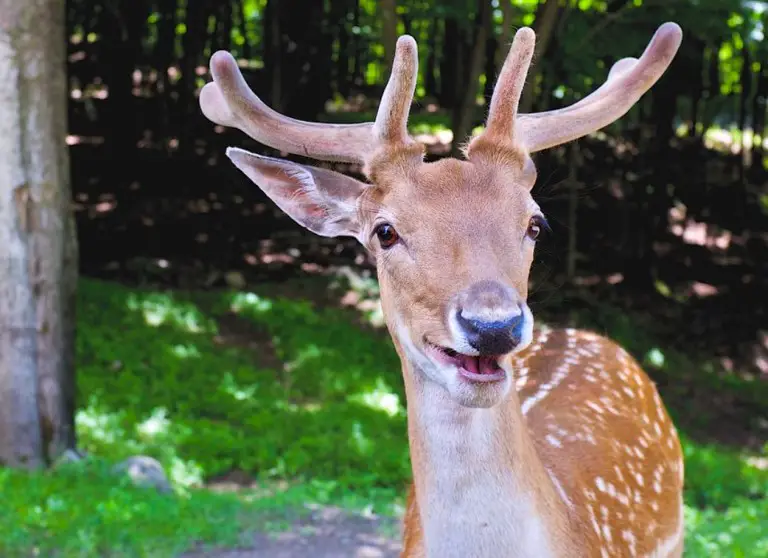No products in the cart.
Deer
How Long Do Deer Live On Average, In Captivity & Wild?
Have you wondered about the age of the deer you’ve just hunted? How long do deer live on average? If you ask deer hunters, it’s normal to get different answers. There are several factors contributing to a deer’s life. And it’s challenging to answer with confidence.
For an exact and clean number, read on below to be more knowledgeable about their lifestyles. More than that, it helps you learn how to hunt them better in the wild.
*This post may have affiliate links, which means I may receive commissions if you choose to purchase through links I provide (at no extra cost to you). As an Amazon Associate I earn from qualifying purchases. Please read my disclaimer for additional details.
How Long Do Deer Live On Average?
You may hear a lot about 3-years-old and mature 5-years-old deers, but how long do deer live on average? Its longevity gets influenced by a range of variables such as habitat, weather conditions, genetics, predators, food availability, and diseases.
In reality, deer live from 3 to 5 years in the wild, and humans are to blame for this short lifespan. It’s all due to the extensive hunting worldwide and predator intervention. Besides, expanding roads and buildings in a deer’s habitat only cause it to have fewer places to hide from danger.
Unlike these deers, those kept in captivity live longer and have healthier lives. According to the Deer Association, captive deers have a lifespan of 7 – 9 years on average.
Male vs female deer
So how about the differences if we break them down into sex and species?
In central and northern Illinois, female deers live for 5.2 years. Meanwhile, males can live for 2.5 years. Yet, a few of them can survive longer than that.
According to one study, the oldest male reached 9 years old while the oldest female was 18 years old. As you see, female deers have longer lifespans than males due to their high-calorie needs, behavior differences, and hunting habits.
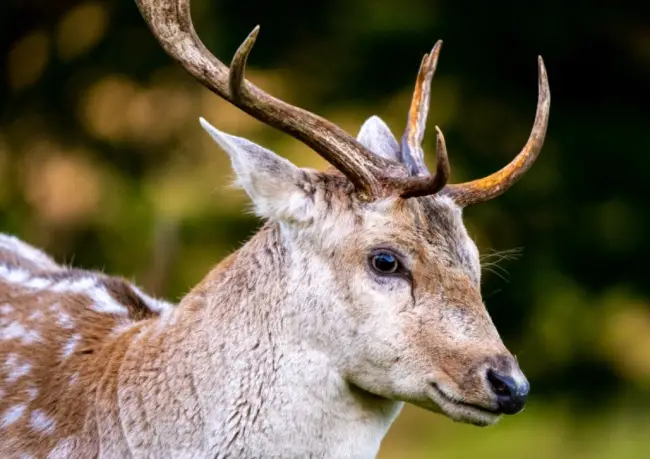
Read more: What Does Baby Deer Eat? How Often & How Much To Give?
The Lifespan Of Different Deer Breeds
Deer lifespan also depends on its species. Let’s check out the following species worldwide:
| Deer breed | In the wild | In captivity |
| White-tail deer | 6-8 years | 18-22 |
| Mule deer | 9-11 | 20-22 |
| Axis deer | 9-13 | 18-22 |
| Albino deer | 6-8 | 10-14 |
| Red deer | 10-12 | 20-22 |
| Sika deer | 14-16 | 15-18 |
| Roe deer | 9-10 | 13-15 |
| Water deer | 10-12 | 18-22 |
| Eld’s deer | unknown | 16-20 |
| Tufted deer | 8-10 | 13-15 |
White-tail deer
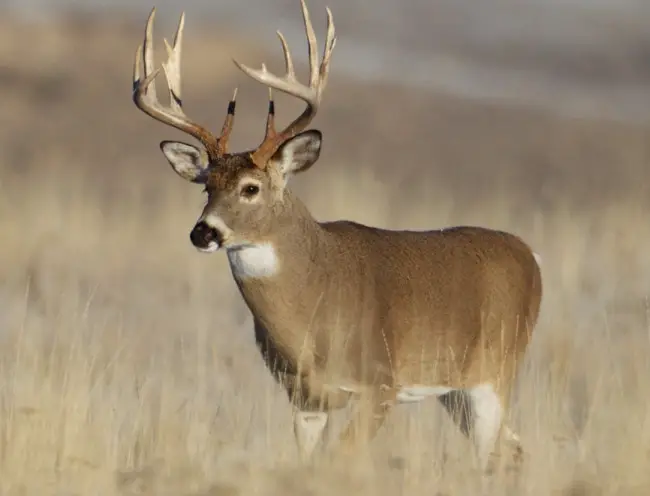
In every species, males usually have a shorter lifespan than females, and this is true with whitetails.
If we break it down into sex, we find out that the average male deer lifespan is nearly 3 years. Meanwhile, the longevity of a doe can reach 6.5 years. Their behavior is one of the main reasons that exposes them to more danger and getting injured.
Some will live longer and some less. You can find the oldest bucks in Georgia and Texas. The female white-tailed deer in Georgia can live 22 years.
Mule deer
Under natural conditions, diseases are not those causing big problems for mule deers. They’re only responsible for a small part of mortality. Also, mule deer have behaviors that guard them off lions, bears, and wolves.
Then how long do Mule deer live on average? They naturally live from 9 to 11 years in the wild and survive longer when in captivity. Captive individuals could live over 20 years.
Axis deer
Axis deer stand out with a spotted body and a short tail. Once getting into new environments, they tend to have fewer predators but more resources to survive.
They also outcompete other species in the area with ease. And this fact explains how long these spotted animals can live. The longevity of axis deer is within 9 – 13 years, but zoo animals can live for 18 or 22 years.
Albino deer
Unlike mule deers, albino deers do not often live long due to their poor eyesight and inability to camouflage. However, people who have seen these white deers for years, there’s no defect about them. They look and act like other deers, and are as healthy as them.
The old doe in the Leland region can live for 13 years. On the other hand, a buck in Buffalo County is said to live for 12 years.
Red deer
They’re alert to predators. In North America, their main threats are believed to be bears and wolves. These predators generally catch young animals. That also means older red deers can get away from danger thanks to their speed and agility.
A wild living red deer tends to have a lifespan of 12 years. And it can live for more than 20 years in captivity.
Read More: Why Do Geese Stand On One Leg in Summer? We explore this bizarre bird behavior here!
Sika deer
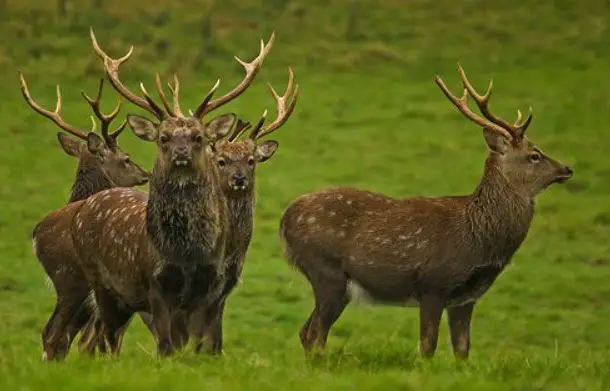
Differing from albino deer, sika deer bear good eyesight, hearing, and a great sense of smell. More than that, they’re capable of sprinting fast whenever alerted but may not keep this speed for long distances. Not only that, but sika deer are also superb swimmers and can jump high over barriers once getting pursued.
For the above reasons, sika deer tend to live for 15 years on average. Zoo animals’ longevity usually ranges from 15 to 18 years.
Roe deer
This species has to deal with the reduction of its forested habitat and road accidents in some areas of Europe. Then how about their enemies? Wolf and lynx are the two most common predators of roe deers. But now they have become extinct in Britain.
The maximum age of roe deer in the wild is about 16 years, but most of them only live for 10 years. They have a lifespan of 15 years in captivity because the roe deer won’t face any danger in the wild.
Water deer
Water deer are vulnerable to carnivores including bears, raccoon dogs, leopards, and foxes. However, the lifespan of these mammals can reach 10 – 12 years.
It’s probably because they’re likely to adapt to different natural conditions like living in cold climates for example. Not just that, but water deer also swim well and can tread up 7 miles without taking a rest.
Eld’s deer
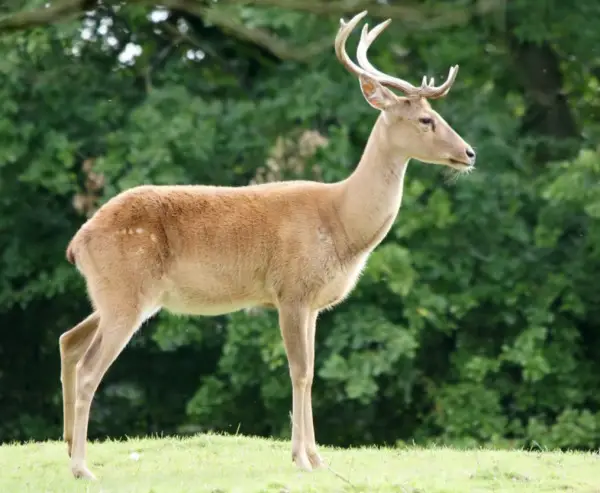
The deer is a victim of human hunting and the loss of natural habitat that gets used for livestock. Yet, not many people know about their lifespan in the wild.
The maximum recorded longevity of a male eld’s deer under human care is around 16 years. Females’ lifespan can reach up to 20 years in captivity.
Tufted deer
In the wild, a tufted deer will run and reveal their whitetail with each jump once getting chased. Thus, it’s hard for predators to catch them.
Better than albino deers, these animals are very active in darkness. That behavior helps them to camouflage easily in the surroundings. Most of them can live as long as 12 years and even reach 15 years in captivity.
You’ll love: Top 7 Best Deer Protein Feeder on the Market
What Affects A Deer’s Mortality?
Knowing the exact number of deers on the land will help you achieve deer management goals and harvest objectives. The deer population has the potential to expand, but this growth gets restricted by mortality that may happen for different reasons.
Living areas
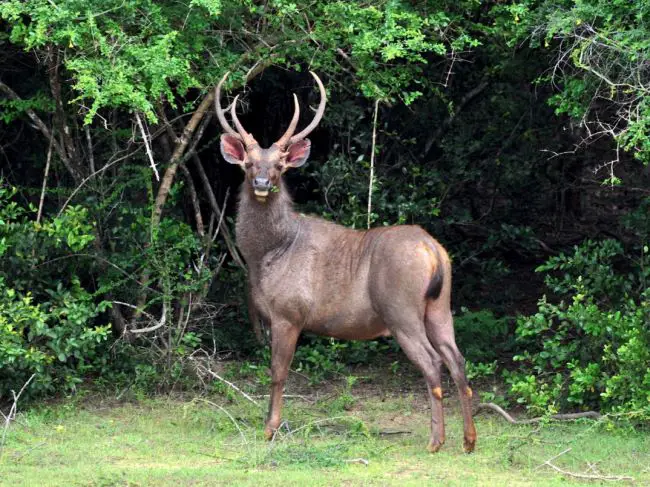
Mature bucks love any bedding area with a southwest-facing slope and it should have two factors: sunshine and headwind.
How come?
Such places enable them to smell remote danger before they detect it and look for a bit of warmth in cold months. Also, bucks usually lay down with trees at the backs. So their living areas are in rainforests, wetlands, grasslands, scrublands, and mountains.
Weather & Climate
Weather and climate significantly affect every activity level for all deer hunts. For example, cool weather can change a mature buck’s psyche.
Large deers will walk and search for females to nudge them around. And cool weather makes them more comfortable than ever. If you’re a bowhunter, it’s best to forecast what day and time deers would be active.
Hunting density
Among factors, hunting is the cause of deer death in every state. It takes 40 – 70% of the bucks and over 25% of the does get hunted each year in areas of Missouri. Thus, hunting is the leading factor in adjusting the deer population size.
Predations
The major predators of deer exist in North America such as wolves, lions, coyotes, and bobcats. They mostly prey on young deers that are only 6 months old or younger than that. In one study, these predators are likely to kill most deers within their initial summer (from birth to 12 weeks of age).
Diseases
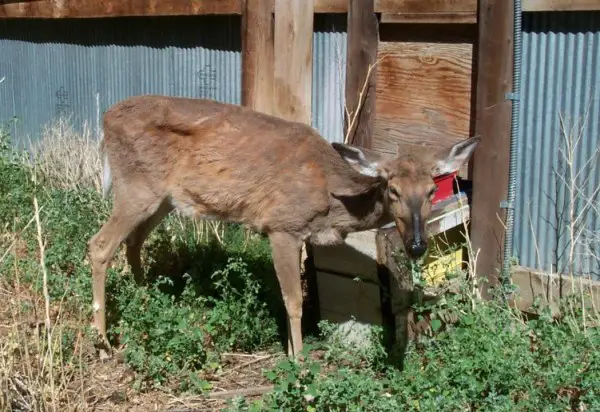
One of the most dangerous diseases affecting deer’s brains and spinal cords is chronic wasting disease. It’s a fatal illness taking place in members of the deer family, including mule deer, elk, white-tailed deer, and more.
Aside from that, more diseases associated with this animal are Q fever, giardiasis, salmonellosis, and leptospirosis.
Unforeseen death threats
- Wildfire
Being smaller is the deer’s weakness. It causes them to be more vulnerable to spreading wildfires, a straightforward threat to this species.
Though forest fire increases deer mortality rates, all kinds of wildlife and deer are drawn to these burned areas. Fire also helps boost forage quality in case you don’t know.
- Proximity to road
In some cases, deer are prone to dashing into traffic since they get spooked. The reason behind this is that most deer have excellent hearing. They tend to think that they’re hearing a predator when so close to roads.
- Forest accidents
Deer also suffer an injury like other animals and no disease gets involved. You may have seen a deer with a broken leg once, and that occurred due to some forest accidents. It probably gets trapped in the crotch of a tree, or between the branch and trunk.
FAQs
1. How old is the oldest deer?
The recorded oldest deer was Bambi, a Scottish red deer owned by a family from Kiltarlity, Scotland. It was born in June 1963 and died in January 1995 when turned 31 years and 226 days old.
2. How to tell a buck’s age?
Currently, we have no accurate way to tell a buck’s age during the hunt other than checking their teeth. When the teeth seem worn down, the deer could be over 5 years old. The stories about looking at the size of the antlers and the points on them won’t be an exact answer.
Final Words
How long do deer live on average? It’s the top question many hunters love to learn about! Deer are animals living in some of the most severe areas in the wild. It also means that they have a shorter lifespan due to some elements.
And hopefully, you’ve finally got the answer to this inquiry after reading the article today. Leave your comment below to let us know your thoughts about this!
